A world that is always changing necessitates the development of new construction methods. Concrete is one of the most extensively utilized construction materials today. It is due to the wide range of uses it provides and its behavior, strength, affordability, durability, and adaptability. As a result, construction workers trust concrete as a safe, robust, and simple material. It’s used in a wide range of structures (from single-family homes to multi-story office buildings) and infrastructure (roads, bridges, etc.). Concrete is used to construct foundations, columns, beams, slabs, and other load-bearing structures.
What is Concrete?
Concrete is a basic material used in civil engineering, such as constructing structures. Concrete is cement, sand, and fine and coarse rock aggregate mixture. The cement works as a binder, holding the components together as it sets and hardens over time. Other types of binding materials are employed in addition to cement, such as lime concrete, bitumen, asphalt, etc.
The cement, a finely powdered substance that hardens owing to water hydration and is also known as hydraulic cement, is the most important component in a concrete mixture.
Different Types of Concrete Used in Construction:
1. Normal Strength Concrete:
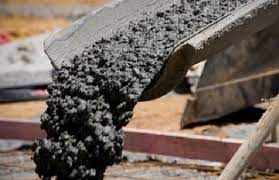
Fig 1: Normal Strength Concrete
Courtesy: civilengineeringbible.com
The concrete in which common elements, i.e., aggregate, water, cement, are utilized is known as regular concrete. It’s also known as normal strength concrete or regular weight concrete. It takes 30 to 90 minutes to set, depending on the humidity in the air and the fineness of the cement. After seven days, the strength builds; common strength values range from 10 MPa (1450 psi) to 40 MPa (5800 psi). After around 28 days, 75-80% of overall strength has been achieved. Nearly 90 days later, 95 percent of the strength has been accomplished.
2. Light–Weight Concrete:
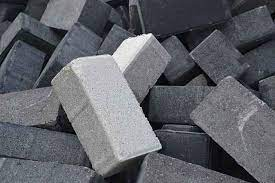
Fig 2: Light-Weight Concrete
Courtesy: civilengineeringnotes.com
Light-weight concrete is defined as concrete with a density of less than 1920kg/m3 and light-weight aggregates by using light-weight aggregates in concrete design. Aggregates will be a key component in determining the density of the concrete. Light-weight aggregates include pumice, perlites, and scoria. Light-weight concrete is used to protect steel buildings and can also be utilized to build long-span bridge decks. These can be used to construct the building blocks as well.
3. High-Strength Concrete:
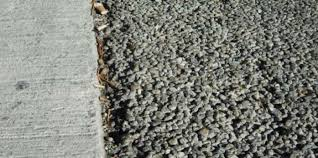
Fig 3: High-Strength Concrete
Courtesy: constructor.org
The compressive strength of a high-strength concrete mix is over 6,000 pounds per square foot. The water-cement quantitative relationship can be reduced to 0.35 or below. This type of cement construction is possible due to the low water-cement quantitative relationship. Superplasticizers are an alternative to the current concrete mix to counteract this problem.
4. Plain Concrete:
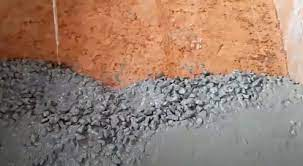
Fig 4: Plain Concrete
Courtesy: civiconcept.com
In plain concrete, there will be no reinforcement. The basic ingredients are cement, aggregates, and water. The most frequent mix design is 1:2:4, also known as the standard mix design. The plain concrete’s density will range between 2200 and 2500 Kg/meter cube. Compressive strength ranges between 200 and 500 kg/cm2. These concrete forms are mostly utilized in constructing pavements and structures, particularly in locations where great tensile strength is not required. The durability provided by this form of concrete is extremely good.
5. High-Density Concrete:
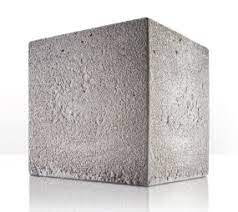
Fig 5: High-Density Concrete
Courtesy: precast.org
Heavy-weight concrete is another name for this type of concrete. The density of this concrete type ranges from 3000 to 4000 Kg/m3. As coarse aggregates, high-density crushed rocks make this type of concrete. The most extensively utilized of these materials is barytes, which have a specific gravity of 4.5. They are commonly seen in atomic power plants and other comparable structures because they provide excellent radiation shielding.
6. Reinforced Concrete: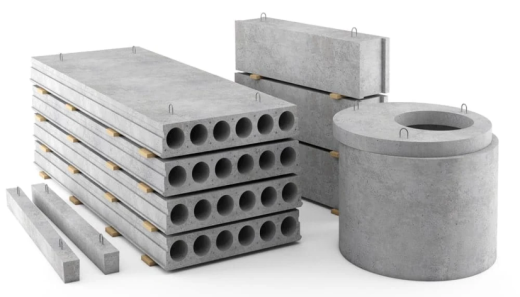
Fig 6: Reinforced Concrete
Courtesy: homestratosphere.com
Reinforced concrete is a type of concrete that has been reinforced to increase its strength and ability to bear high tensile strains. In compression, plain concrete is fine, but it lacks tensile strength. Reinforced concrete combines the best of both worlds: high compression and the ability to withstand tensile loads.
Steel, in the form of rods, bars, meshes, and steel fibers, is used to reinforce concrete. It is critical to creating a strong bond between the concrete and the reinforcement steel while reinforcing. This bond would determine the endurance and strength of the resulting concrete. This concrete is frequently used to construct strong bridges, columns, ceilings, and other constructions.
7. Prestressed Concrete:
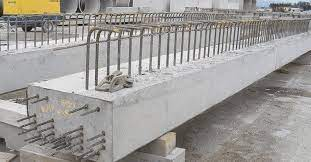
Fig 7: Prestressed Concrete
Courtesy: civilstring.com
Prestressed concrete is a structural material that allows engineers to establish predefined engineering stresses in parts to offset the stresses that arise when loaded. A single material combines the strong compressive strength of concrete with the high tensile strength of steel. In reinforced concrete, stresses are carried by steel reinforcement, but induced stresses sustain the load throughout the structural member in prestressed concrete. Floor beams, poles, railway sleepers, and constructions like bridges, water tanks, roofs, and runways are increasingly often made with it.
8. Precast Concrete:
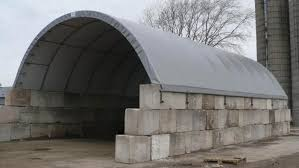
Fig 8: Precast Concrete
Courtesy: lockersolution.com
Various structural pieces can be manufactured and cast at the factory according to specifications and then transported to the assembly site. Precast concrete refers to these concrete units. Concrete blocks, stair units, precast walls and poles, concrete lintels, and many other parts are precast concrete units. Because just assembling is required, these units have the advantage of being quick to create. Their conveyance is the only safeguard taken.
9. Fiber Reinforced Concrete:
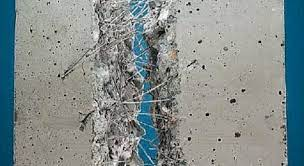
Fig 9: Fibre Reinforced Concrete
Courtesy: atlantisfibre..com
Fiber Reinforced Composite Concrete is a composite material made up of fibrous material that adds structural strength. It consists of cement, mortar, or concrete mixed with appropriate fibers that are discontinuous, distinct, and uniformly scattered. Fibers are commonly used in concrete to prevent cracking caused by shrinkage of the plastic and drying shrinkage. They also reduce concrete permeability, resulting in less water bleeding.
10. Air Entrained Concrete: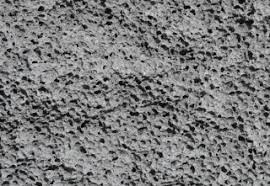
Fig 10: Air Entrained Concrete
Courtesy: atlantisfibre..com
The invention of a type of concrete known as air-entrained concrete is one of the most significant achievements in concrete technology. This method is applied when the concrete is susceptible to freezing and thawing. When concrete is exposed to freezing and thawing, this form of concrete is employed. The air-entraining additive is used to prepare it.
11. Ready Mix Concrete:
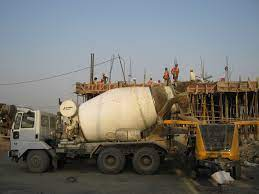
Fig 10: Ready Mix Concrete
Courtesy: civilblog..com
Ready-mix concrete is a type of concrete that is mixed and soaked at a central mixing plant. A truck-mounted transit mixer transports the ready-mixed concrete to the job site. A centralized mixing plant will be required to produce such concrete. These plants will be placed at a distance from the construction site that can be adjusted. The setting of concrete will occur if the transit is too long.
12. Self-Compacting Concrete:
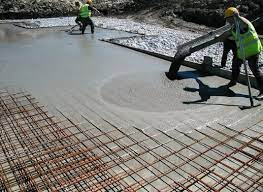
Fig 12: Self Compacting Concrete
Courtesy: gharpedia.com
Self-consolidated concrete is a concrete mix that compacts by its weight when put. There is no need to give vibration for the same individually. This mixture is more workable. Between 650 and 750 will be the declining value. This concrete is also known as flowing concrete because of its increased workability. Self-consolidating concrete performs best in regions with strong reinforcement.
13. Polymer Concrete:
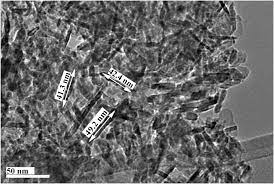
Fig 13: Polymer Concrete
Courtesy: ascelibrary.org
Polymer concrete comprises polymeric ingredients including Furan Resins, Acrylics, Styrene-Acrylics, Vinyl Acetate-Ethylene (VAE), Urea Formaldehyde Resin, Polyvinyl Acetate (PVA), Epoxy Resins, Methyl Methacrylate MMA, Styrene and Polyester Styrene, Methanol Resin, and Styrene-Butadiene Resin.
14. Pervious Concrete:
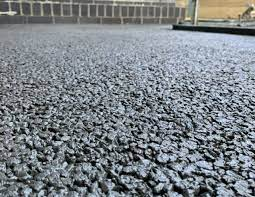
Fig 14: PreviousConcrete
Courtesy: constrofacilator.com
Another form of concrete used in constructing roads and pavements is pervious concrete. It is intended to address the issues of storm-water runoff and local watershed replenishment. Pervious concrete absorbs water rather than allowing it to collect in puddles. It makes the pavements safer for walkers and automobiles by reducing hydroplaning, snow buildup, and tire spray. It reduces the requirement for storm drains and curbs as well.
15. Shotcrete Concrete:
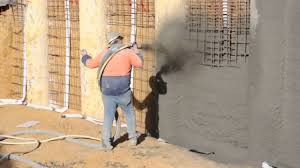
Fig 15: Shotcrete Concrete
Courtesy: constructionor.com
Shotcreting is a method of forming structural or non-structural components of structures by forcing mortar or concrete through a tube and tapping it onto a surface at high speed. Shotcrete is being used in the wet-mix process, and it has gained widespread adoption in several nations. Cement, aggregate, additive, and water are mixed in a wet-mix application before being wired through a hose and atmospherically constructed.
In dry-mix applications, on the other hand, cement, aggregate, and additives are mixed and supplied pneumatically through a tube so that water is injected evenly throughout the mixture because it is being designed at the tap via a water ring.
16. Pumped Concrete:
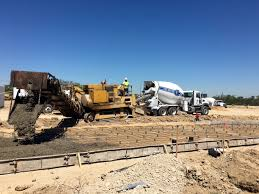
Fig 16: Pumped Concrete
Courtesy: anaipumping.com
The conveyance of concrete to heights is one of the most important properties of concrete utilized in big-scale construction, particularly for high-rise construction. As a result, one of the properties of concrete that makes it easy to pump will lead to the creation of pumpable concrete. Pumping concrete must have sufficient workability to be easily carried through the pipe. The concrete will be discharged through a stiff or flexible hose to the desired location. The concrete must be fluid in character, with sufficient fine particles and water to fill the voids.
17. Vacuum Concrete:
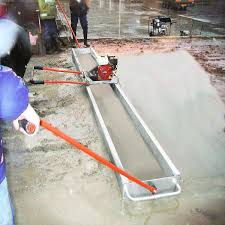
Fig 17: Vacuum Concrete
Courtesy: civiconcept.com
Concrete with the right amount of water content is poured into the formwork. The excess water is subsequently pumped away using an air pump, with little regard for the concrete’s ability to set. As a result, in comparison to typical construction techniques, the concrete structure or platform will be able to be used sooner. These concretes can reach their 28-day compressive strength in just ten days, which means the structure’s crushing strength is 25 percent higher than standard concrete types.
18. Lime Concrete:
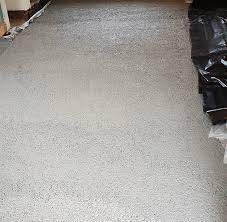
Fig 18: Lime Concrete
Courtesy: roundtowerlime.com
Lime concrete is a type of concrete that uses lime as a binding agent in addition to other materials. Floors, vaults, and domes are the most common applications. Lime concrete, unlike cement, is renewable and has both environmental and health benefits.
19. Stamped Concrete:
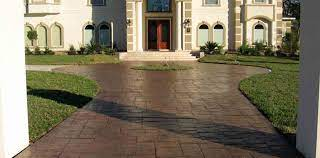
Fig 19: Stamped Concrete
Courtesy: increteofhouston.com
Stamped concrete is a type of concrete in which lifelike designs resembling natural stones, granites, and tiles are created by pressing professional stamping pads into the surface. Once the concrete has reached its plastic state, this stamping is applied. Using a variety of colored stains and texture work, you may eventually achieve a look that’s eerily similar to more expensive genuine stones. A sealed end will provide a high aesthetic look at a low cost. This material is frequently used in constructing roads, interior flooring, and patios.
20. Roller Compacted Concrete:
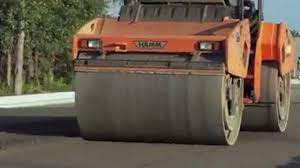
Fig 20: Roller Compacted Concrete
Courtesy: civilsutras.com
Roller compacted concrete, often known as rollcrete, is a firm, low-cement concrete laid using procedures similar to those used in earthmoving and paving. It’s commonly created by substituting fly ash for some of the cement (OPC). The concrete is poured onto the surface to be covered and compacted with huge heavy rollers similar to earthwork.
The mix in this type of concrete has a high density and cures into a solid monolithic block over time. Concrete pavement is usually made of roller-compacted concrete. Roller compacted concrete dams can also be erected since the low cement content generates less heat during the curing process than traditional huge concrete pours.
21. Asphalt Concrete:
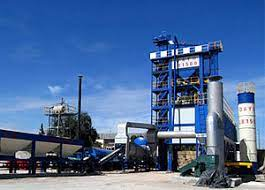
Fig 21: Asphalt Concrete
Courtesy: en.wikiepedia.com
Asphalt concrete is a composite material made of aggregates and asphalt often used to cover roadways, parking lots, airports, and embankment dams. Asphalt concrete is also known in North America as asphalt, blacktop, or pavement, and in the United Kingdom and Ireland as tarmac, bitumen macadam, or rolled asphalt.
22. Glass Concrete:
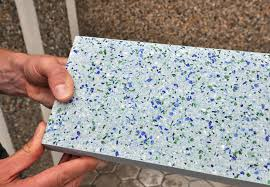
Fig 22: Glass Concrete
Courtesy: heringinternational.com
The term “glass concrete” refers to the integration of glass with exposed concrete, which opens up a whole new range of architectural possibilities. It enhances the aesthetic appeal of surfaces while also providing long-term strength and thermal insulation. It’s employed in various ways in both home and business settings. Large format slabs for flooring feature distinctive splashes of colorful glass. Concrete facades are also adorned with gleaming glass aggregates.
23. Rapid Strength Concrete:
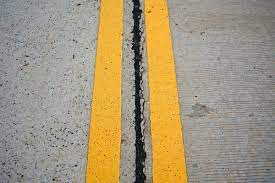
Fig 23: Rapids Strength Concrete
Courtesy: highways. today
As the names suggest, this concrete can gain strength hours after being created. As a result, formwork removal is straightforward, and building construction is completed rapidly. These have a wide range of applications in road repairs because they can be reused after a few hours.
24. Decorative Concrete:
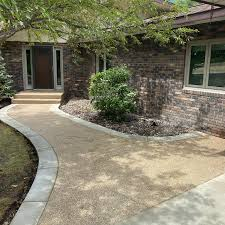
Fig 24: Decorative Concrete
Courtesy: doublejconcrete.com
Concrete that has been treated in several ways to improve its aesthetic appeal is decorative. Coloring, texturing, molding, polishing, embossing, etching, embedding things, putting decorative toppings, and so on are some of the procedures it may go through. Color hardener, which provides a unique color and a highly durable surface; integral color, which can be used on any texture and application, is one of the materials used to produce decorative concrete. Finally, chemical stains produce an irregular, translucent tint that gives the appearance of real stone.
25. Pre-Packed Concrete
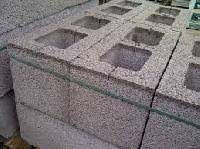
Fig 25: Pre-Packed Concrete
Courtesy: exportersindia.com
Pre-Packed concrete is typically made by combining various elements. However, some of the materials (coarse aggregate) can be packed into the formwork and then filled with specially prepared cement-sand grout to cover all pores and form a concrete mass. Pre-packed concrete is utilized when a big volume of concrete (such as a large machine block foundation) needs to be concreted without building joints.
Conclusion:
Cement, water, sand, and stone combinations are frequent concrete components. However, various components are employed to give diverse concrete qualities, allowing it to be utilized for various purposes. Whether you’re planning a large-scale project or a little home, the concrete mix you select will significantly impact the project’s success. Choosing the right sort of concrete for any form of the building is, of course, critical.
References:
1.23 Types of Concrete Used in Construction and their Applications – The Constructor. (2017, November 23). The Constructor; theconstructor.org. https://theconstructor.org/concrete/types-concrete-applications/19779/
2. What is concrete? Eleven different types of concrete – CivilEngineeringBible.com. (n.d.). CivilEngineeringBible.Com; civilengineeringbible.com. Retrieved April 26, 2022, from https://civilengineeringbible.com/article.php?i=325
3. Staff & Writers, H. E. (2019, July 31). 16 Different Types of Concrete – Home Stratosphere. Home Stratosphere; www.homestratosphere.com. https://www.homestratosphere.com/types-of-concrete/
4. Rajput, K. (2021, September 8). What Is Concrete | 31 Different Types of Concrete? CivilJungle; civiljungle.com. https://civiljungle.com/different-types-of-concrete/
5. Types of Concrete & Characteristics | Concrete Classification. (2016, February 26). Types of Concrete & Characteristics | Concrete Classification; www.aboutcivil.org. https://www.aboutcivil.org/types-of-concrete.html
6. What is Concrete? Composition & Types of Concrete – Civil Engineering. (n.d.). What Is Concrete? Composition & Types of Concrete – Civil Engineering; civiltoday.com. Retrieved April 26, 2022, from https://civiltoday.com/civil-engineering-materials/concrete/270-concrete-definition-components-types
7.26 Different Types of Concrete; [Its Classification, Uses & Properties]. (2017, July 25). Civil Seek; civilseek.com. https://civilseek.com/different-types-of-concrete/
8. Prasad. (2022, February 7). Types of Concrete [32 types] – Structural Guide. Structural Guide; www.structuralguide.com. https://www.structuralguide.com/types-of-concrete/
If you have a query, you can ask a question here.


